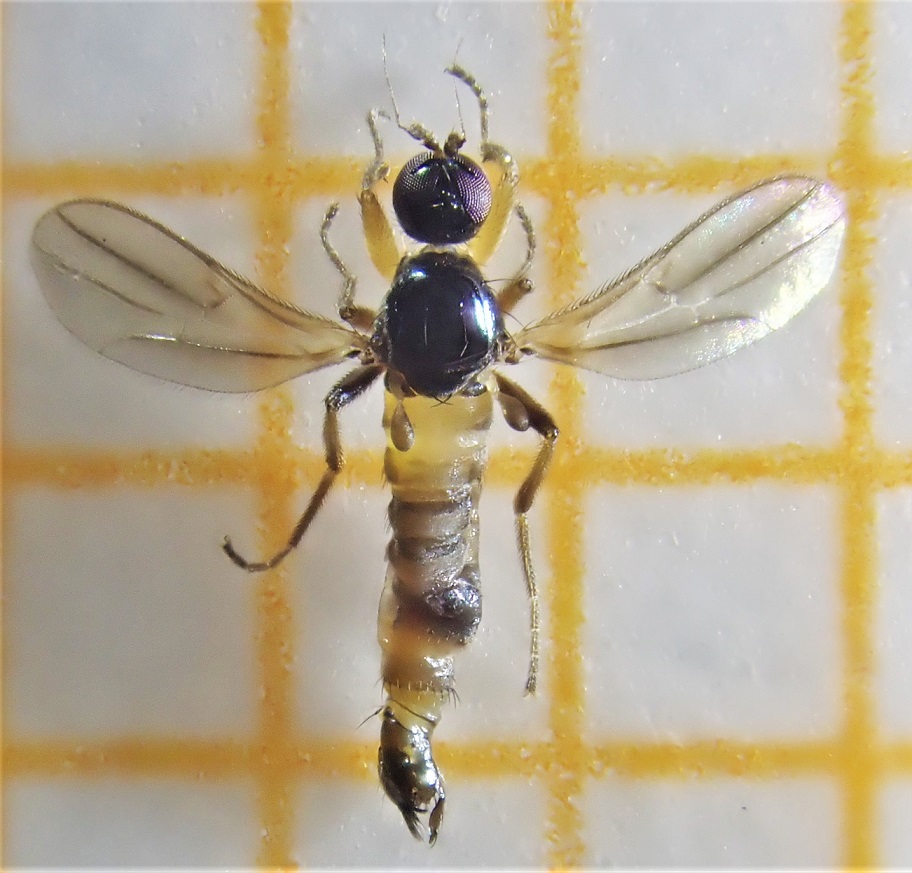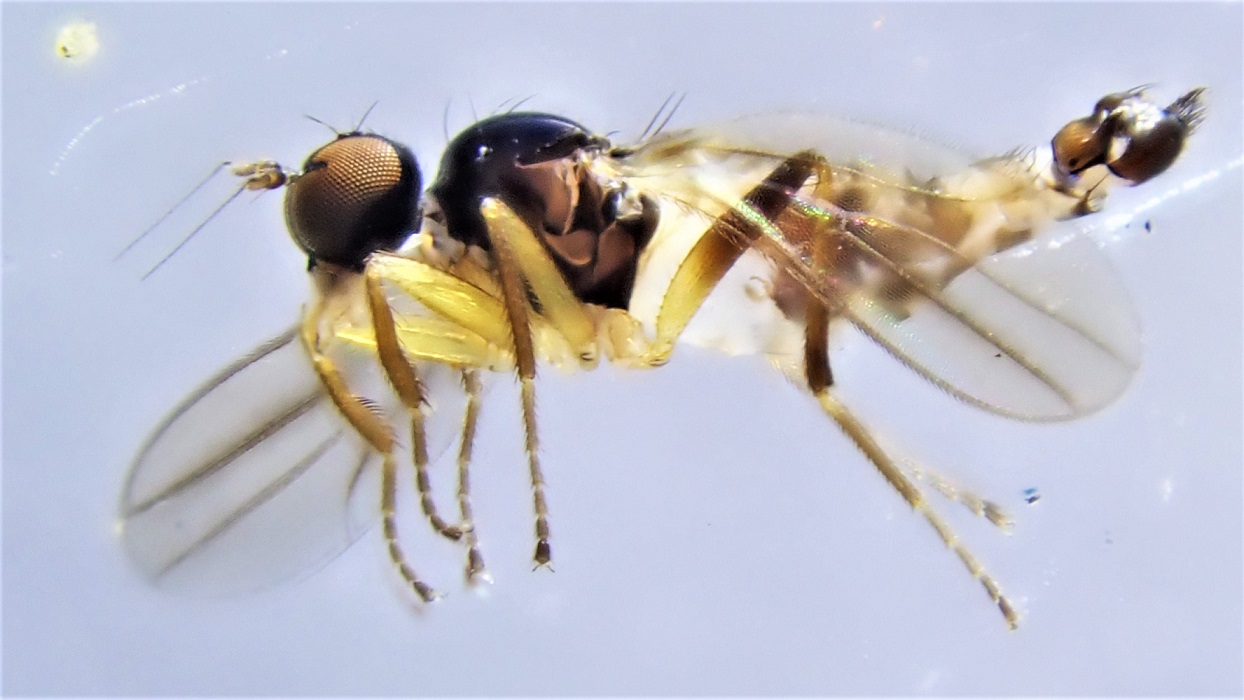Diptera.info :: Identification queries :: Diptera (adults)
Who is here? 1 guest(s)
|
Hybotidae from Polynesia
|
|
| basti_st |
Posted on 16-11-2021 06:33
|
|
Member Location: PF & NZ Posts: 35 Joined: 30.06.21 |
Hi colleagues, can someone help me with the identification of this dipteran? I am not even sure about the family. Any input and ID help is highly appreciated. More images available if necessary. Collected in French Polynesia Thanks, best Sebastian basti_st attached the following image:  [233.08Kb] Edited by basti_st on 18-11-2021 04:04 |
|
|
|
| Tony Irwin |
Posted on 16-11-2021 12:03
|
|
Member Location: Norwich, England Posts: 7232 Joined: 19.11.04 |
Hybotidae - not sure which genus
Tony ---------- Tony Irwin |
|
|
|
| basti_st |
Posted on 18-11-2021 04:03
|
|
Member Location: PF & NZ Posts: 35 Joined: 30.06.21 |
Hi Tony, thanks for the family identification. Hybotidae have thus far not been reported from Polynesia, so I am not sure how to proceed with the IDing. I am unfamiliar with this dipteran family - does it commonly show high degrees of endemism and this is potentially an undescribed species - or rather the opposite; are there introduced/ widespread species and my animal is potentially a recent introduction to Polynesia? I'm thankful for any input on what would be the best way to continue working on this animal. Best Sebastian |
|
|
|
| igor |
Posted on 18-11-2021 13:54
|
|
Member Location: Posts: 294 Joined: 23.11.06 |
Hi, This is the genus Austrodrapetis Smith. It includes only one species (A. coxalis) described from Cook Is. Your specimen (male) is very similar to A. coxalis. A picture of fore legs would be helpful (they are modified in the male of A. coxalis). Best wishes, Igor Shamshev |
|
|
|
| basti_st |
Posted on 22-11-2021 20:24
|
|
Member Location: PF & NZ Posts: 35 Joined: 30.06.21 |
Hi Igor, thanks for your input. I hope this picture from lateral view helps. If not, let me know and I can make more images from different angles. The animal has definetly the modifications described and illustrated in Smith (1964). The fore coxae from the inside shows a dark spot and the modification of the fore tibia seems also to resemble the illustration in Smith. However, some of the other characteristics described for Austrodrapetis coxalis are, at least to me as a beginner in dipteran identification, not clearly given... But it probably requires a more thorough morphological examination under higher magnification, which I am currently not able to do. Is it fair to just assume that this is A. coxalis, or are we possibly looking at an undescribed, second species of this genus? I find it extremely difficult to judge, which genera/ families show high degrees of radiation and speciation and which not. In some groups, there is a new species basically on every island in the Society Islands, even though they are only few kilometres separated, while other species seem to be widely distributed from Melanesia to Hawaii. Best Sebastian basti_st attached the following image:  [206.07Kb] Edited by basti_st on 22-11-2021 20:46 |
|
|
|
| igor |
Posted on 30-11-2021 23:15
|
|
Member Location: Posts: 294 Joined: 23.11.06 |
Hi Sebastian, I am sorry for late reply. Thank you for the additional picture and interesting comments. As I see from your new picture there are some colour differences but otherwise this specimen is rather A. coxalis. Indeed, there are undescribed species of Austrodrapetis in Melanesia, e.g. from Fiji. Best wishes, Igor |
|
|
|
| Jump to Forum: |















